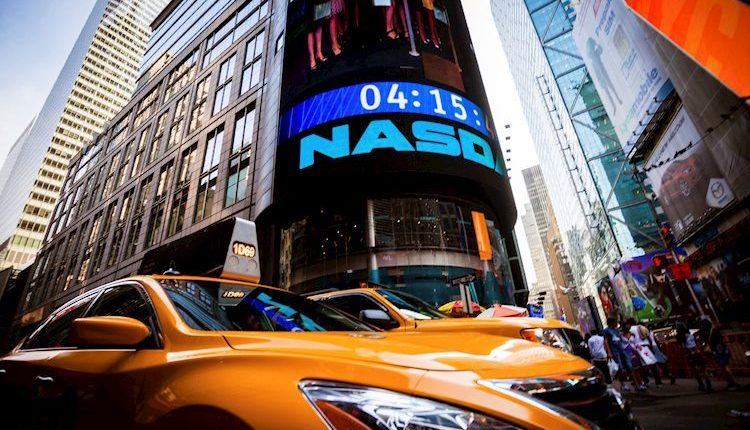The 2020s have been a whirlwind decade for Wall Street’s brightest tech stocks, and 2025 could see even more growth as it appears certain that one of the Magnificent Seven will surpass a $4 trillion valuation for the first time. But could one stock reach a $5 trillion market capitalization this year?
Nvidia’s (NASDAQ: NVDA) market performance since 2020 has been astounding. Having rallied more than 2,100% since the beginning of the decade, the semiconductor giant has muscled its way into Wall Street’s elite stocks and is showing no signs of slowing down.
Buoyed by an AI boom that’s carried the S&P 500 through a turbulent economic period for the United States, Nvidia is one of three stocks with a market capitalization in excess of $3 trillion. Apple (NASDAQ: AAPL) and Microsoft (NASDAQ: MSFT) complete the roll call with AAPL already coming within $80 billion of becoming the world’s first $4 trillion stock in December 2024.
Despite suffering Barclays rating downgrades at the beginning of 2024 due to weakening demand in China, Apple has embraced generative AI tools to end the year in a strong position. Optimism is high for AAPL to continue its trajectory in Q1 2025 with the anticipated launch of iOS version 18.4 which is set to improve Siri’s AI capabilities.
However, it’s Nvidia’s innovation pipeline that could position the stock as the world’s most valuable in 2025. With the hotly anticipated rollout of the tech giant’s Blackwell GPU unit set to define NVDA’s success over the year ahead, could $5 trillion really be achievable for Nvidia?
According to I/O Fund analyst Beth Kindig, who successfully predicted back in 2021 that Nvidia would become a bigger stock than Apple within five years, Nvidia has every chance to become a $5 trillion stock this year.
Blackwell’s success could not only push NVDA 70% higher in 2025 in a move that could deliver a market capitalization of $5.6 trillion, but Kindig also believes that the innovative new hardware could put Nvidia on course to a $10 trillion valuation by 2029.
Behind Nvidia’s Whirlwind Rally
To provide more context for the rate of Nvidia’s growth in recent years, the firm’s market rally of more than 2,100% since the beginning of the decade is almost 10 times faster than that of Apple’s approximate 220% rate of growth.
While Apple’s revenue and earnings growth have been steady throughout the 2020s, Nvidia’s rising use cases for its GPU amid the generative AI boom paved the way for a period of parabolic growth to support new processing requirements among firms embracing new artificial intelligence tools.
As a result, Nvidia’s revenue has surged and, in some cases, tripled year-over-year across quarters.
The firm’s Q3 earnings call for the financial year 2025 saw revenue increases of 17% from the previous quarter to $35.1 billion, representing a rise of 94% from a year ago. Additionally, GAAP earnings per diluted share was $0.78, up 16% from the past quarter and 111% from a year ago.
These fundamentals point to a rate of growth that appears to show no signs of slowing down, and with an enviable innovation pipeline for 2025, we could see NVDA undertake significant growth over the year ahead.
The Impact of Blackwell
Blackwell is Nvidia’s latest graphics processing unit (GPU) architecture and has the power to run trillion-parameter large language models (LLMs) at up to a 25 times lower cost and energy consumption than the Hopper GPU platform.
LLMs like ChatGPT are expected to become commonplace as AI continues its emergence and Blackwell has the potential to form the backbone of future artificial intelligence programs.
Nvidia CEO Jensen Huang has already labelled demand for Blackwell ‘staggering’, and the firm began shipping the GPU in Q4 2024.
Despite estimates suggesting that Blackwell production could reach 150,000 to 200,000 units in Q4 2024 and 500,000 to 550,000 units in Q1 2025, the real figure could be closer to 250,000 to 300,000 units in Q4 and 750,000 to 800,000 in Q1.
This level of supply and demand could be a catalyst for an even more impressive market rally for Nvidia in 2025 and beyond.
Threats to $5 Trillion
At this stage, it’s important to highlight that Nvidia’s continued growth will depend on its semiconductor market dominance, which now hinges on the performance and market reception of Blackwell.
Should the hotly anticipated product prove to be underwhelming for users, Nvidia could not only lose momentum on Wall Street but give up valuable ground to market rivals like AMD and Intel.
We also need to acknowledge the state of the US economic landscape, which has become increasingly uncertain as Donald Trump begins his second term in the White House.
Lingering inflation concerns have seen Fed members drop their rate cut expectations from four to two for 2025, and this could weigh heavily on Wall Street following a 2024 that saw the S&P 500 surpass 5,000 and 6,000 points for the first time last year.
With fears that Trump’s policies surrounding tariffs and deregulation could be inflationary, markets may face fresh challenges in 2025 that could hamper growth.
Innovation to Take Center Stage
As the generative AI boom transitions from hype to its implementation phase in 2025, we’re likely to see firms like Nvidia build fresh momentum on Wall Street.
Should the economic outlook for the United States remain resilient, the rollout of Nvidia’s Blackwell GPU could help to secure further growth for the stock that may push its valuation beyond $4 trillion and toward $5 trillion before the end of the year.
Although $5 trillion remains a milestone that seems lightyears away for Wall Street’s Magnificent Seven today, the rise of AI has shown that anything’s possible for the industry’s brightest tech firms. Given its outperformance in recent years, Nvidia certainly has the momentum to become the world’s first $5 trillion stock sooner rather than later.
Read the full article here

